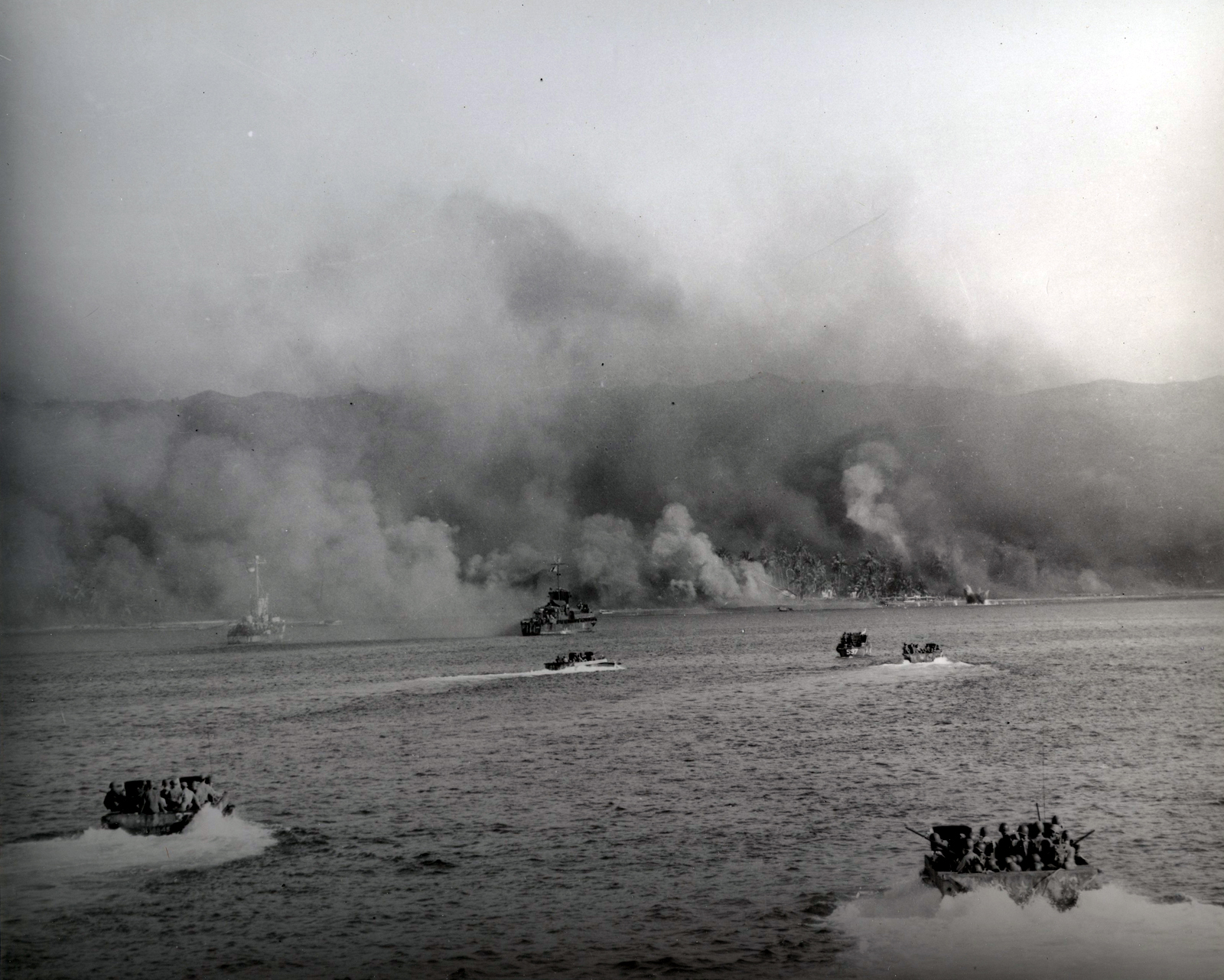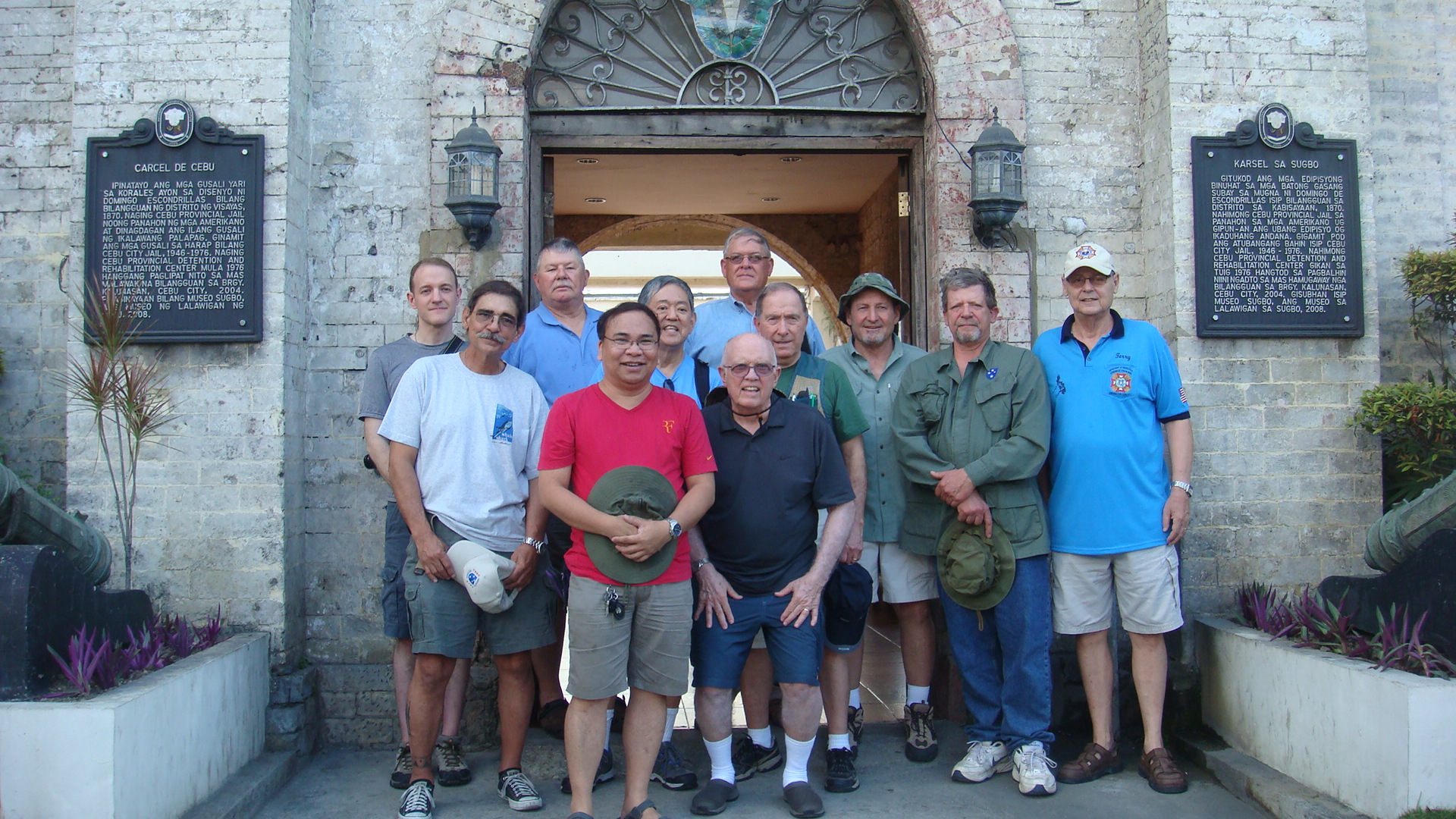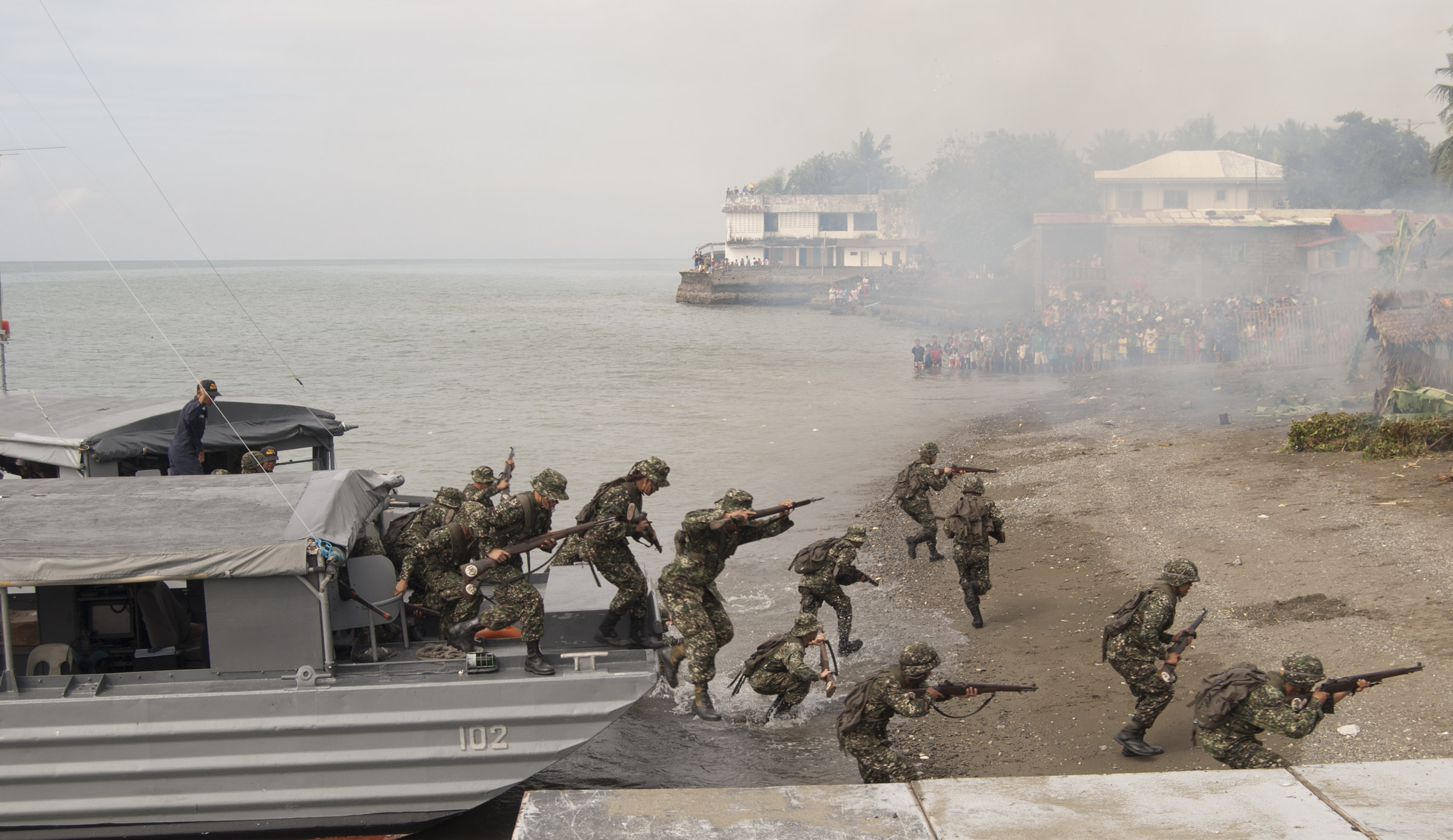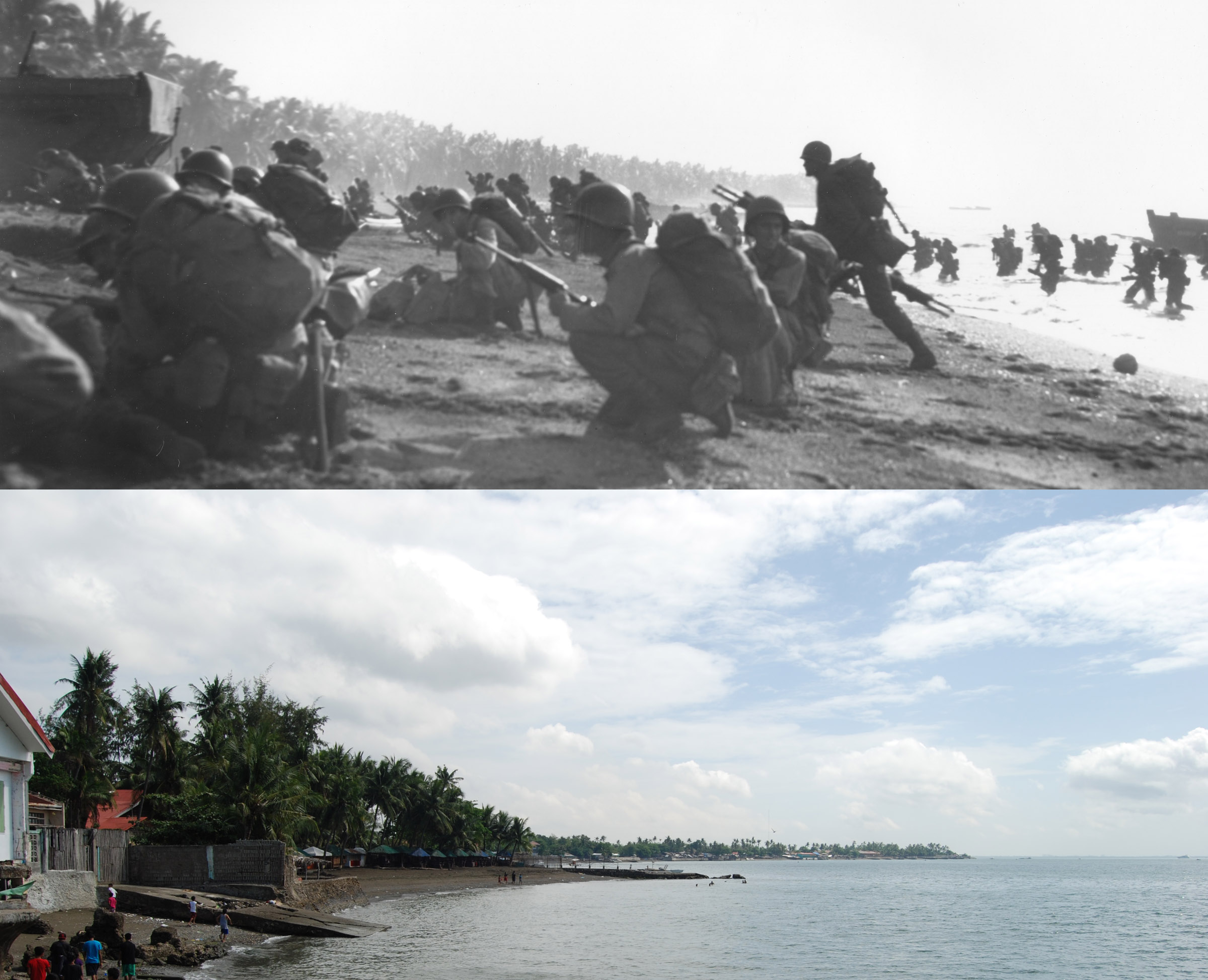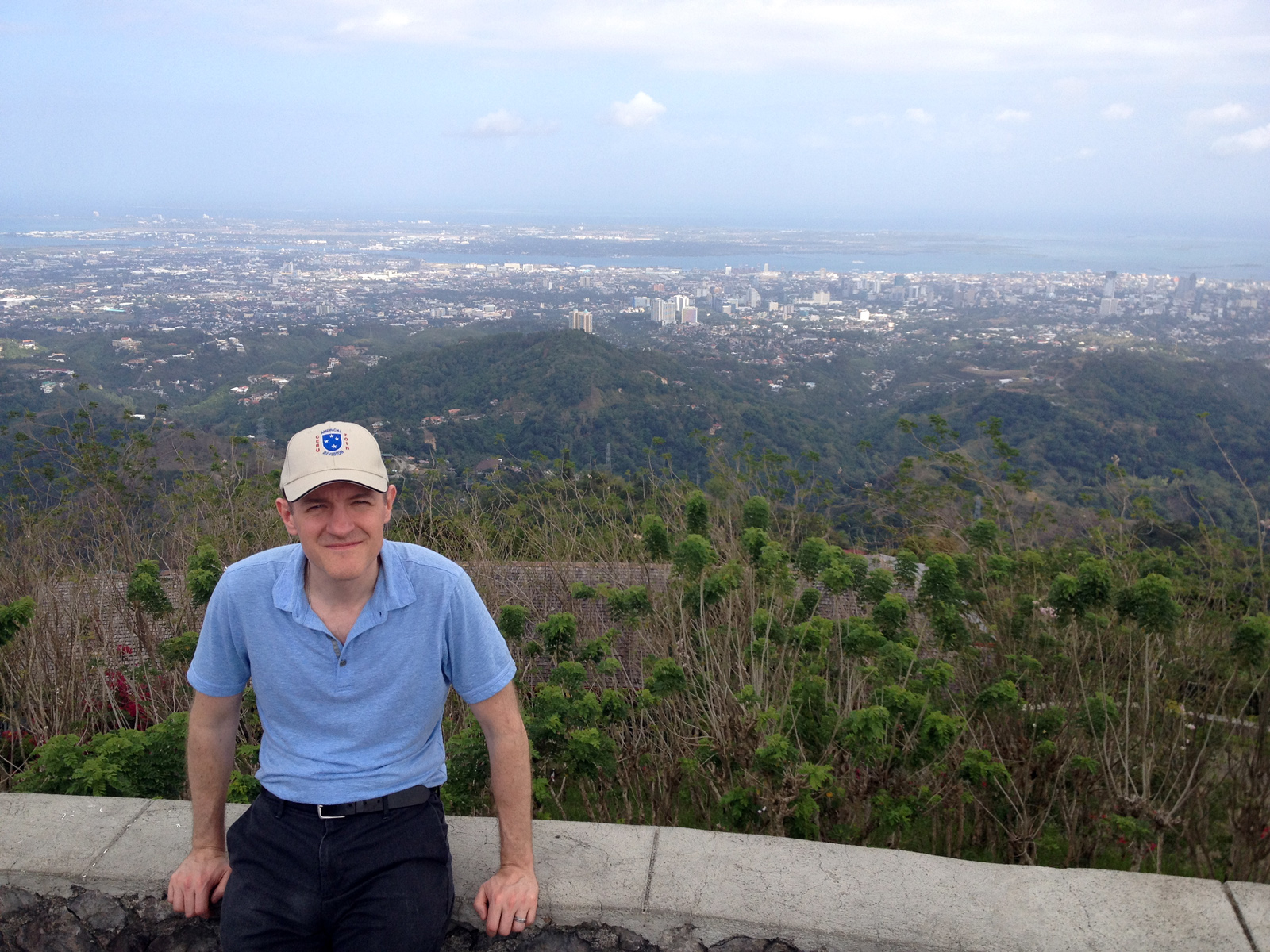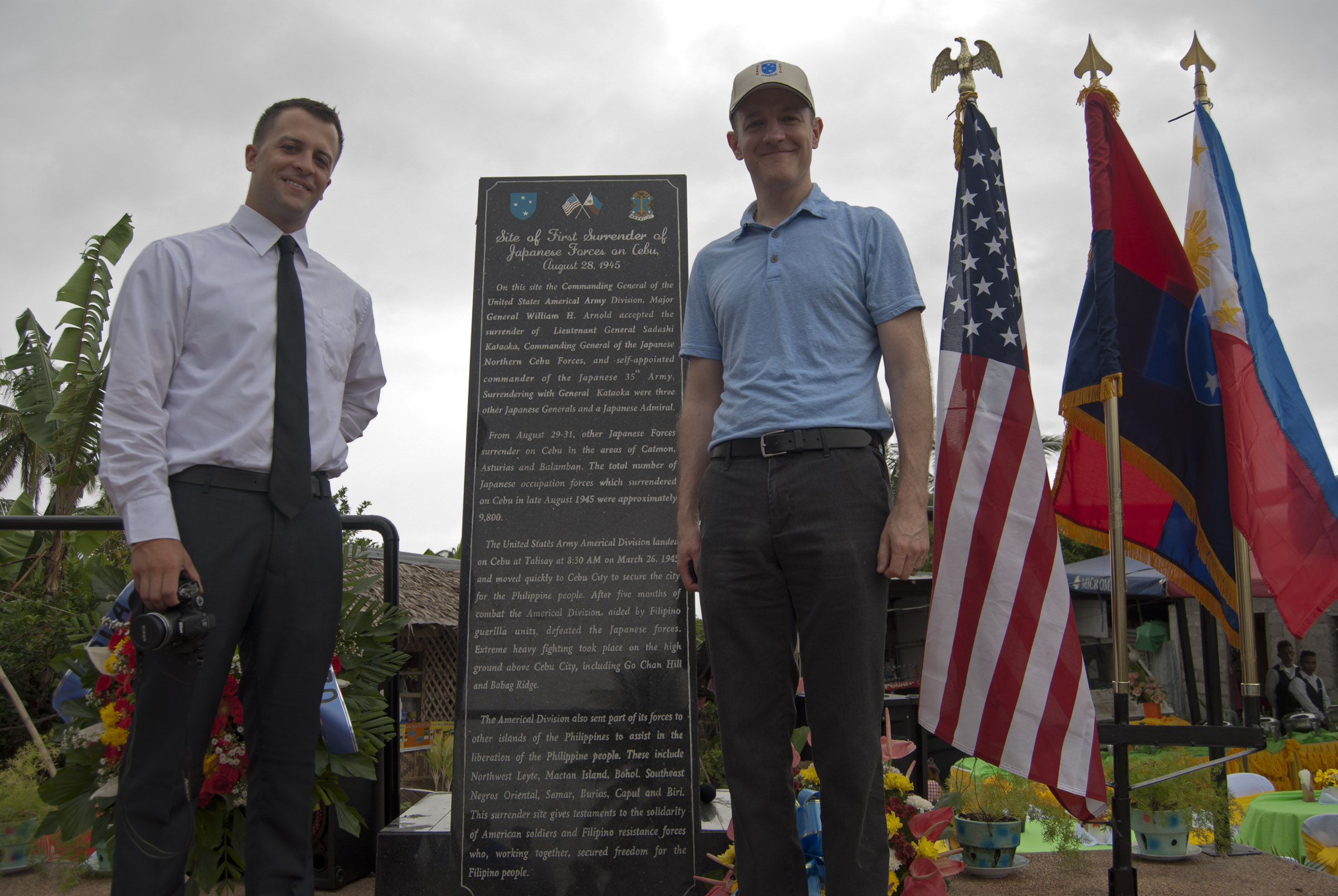As we here on the east coast of the United States await the landfall of Hurricane Joaquin, it brings to mind another big storm that occurred on the other side of the world, 71 years ago this week. Deep in the jungles of Bougainville, in the Solomon Islands, Allied troops were locked in a long standoff with Japanese forces. The Allies had established a perimeter on the Japanese-held island in November 1943. Japanese forces planned and executed a huge offensive in March 1944, but this attack failed, and their remaining troops faded off into the jungle (read more here). Allied airstrips on the island remained safe and operational, and major fighting on the island was over. Yet thousands of Japanese soldiers lurked in the deep jungle and massive mountains beyond the American perimeter. U.S. Army units slowly expanded the perimeter, but there was no concerted effort to drive the Japanese off the island or wipe them out.
There were periodic small clashes. In late September1944, the 182nd Infantry set off into the jungle near the Laruma River to wipe out a reported Japanese encampment. The soldiers clawed their way up steep hills, and waded through chest-deep rivers. By 1 October, they were in position to launch what they referred to as “The Battle of Nip Gap” along the Doyabie River. PFC Arnold West of Company G was killed in attack on a pillbox, while Sergeants Jack Morton and Robert Egler of the company were awarded Silver Stars for their actions that day. The fighting continued for days, with the 182nd Infantry claiming nearly 200 enemy soldiers killed, and multiple pillboxes. On 6 October the American troops returned to camp to resupply, before heading out the next day to knock out another Japanese camp near the village of Piateripaia. As they moved in to encircle and attack the Japanese position, rain began to fall. This was a daily occurrence on Bougainville, but this storm strengthened and conditions worsened. The rain turned into a deluge, and the wind began to roar. The Laruma River flooded. Seven bridges built to cross the river were destroyed. Communication wires were ripped out. Trees were knocked down, and the 182nd began to take casualties – from the storm. Food spoiled, and supplies were washed away.
In the midst of this carnage, the 182nd Infantry kept advancing on the Japanese. But they soon found themselves out of position. The terrain, even in the best of conditions, was nearly impassable. Compounding that problem, some of the trails and roads had been washed away by the storm. Other routes were blocked by downed trees. The loss off food and supplies left the soldiers hungry, and emergency rations were being used. By 10 October, the 182nd Infantry offensive was called off, and the exhausted troops returned to their base behind the front lines. Their attack was over, defeated by a storm that laid waste to the battlefield.

